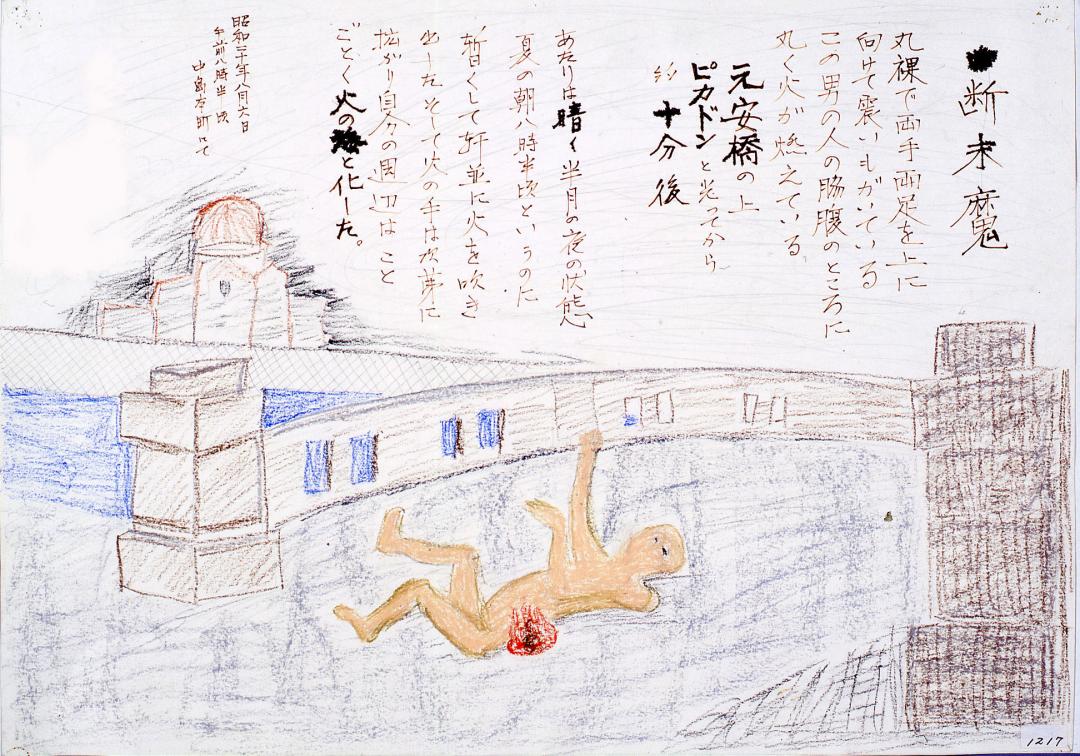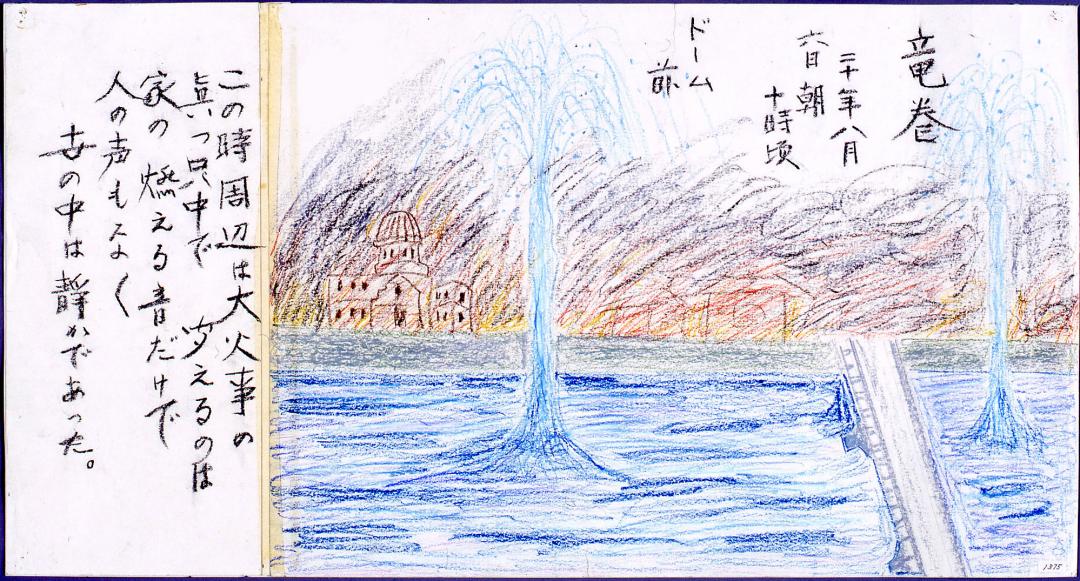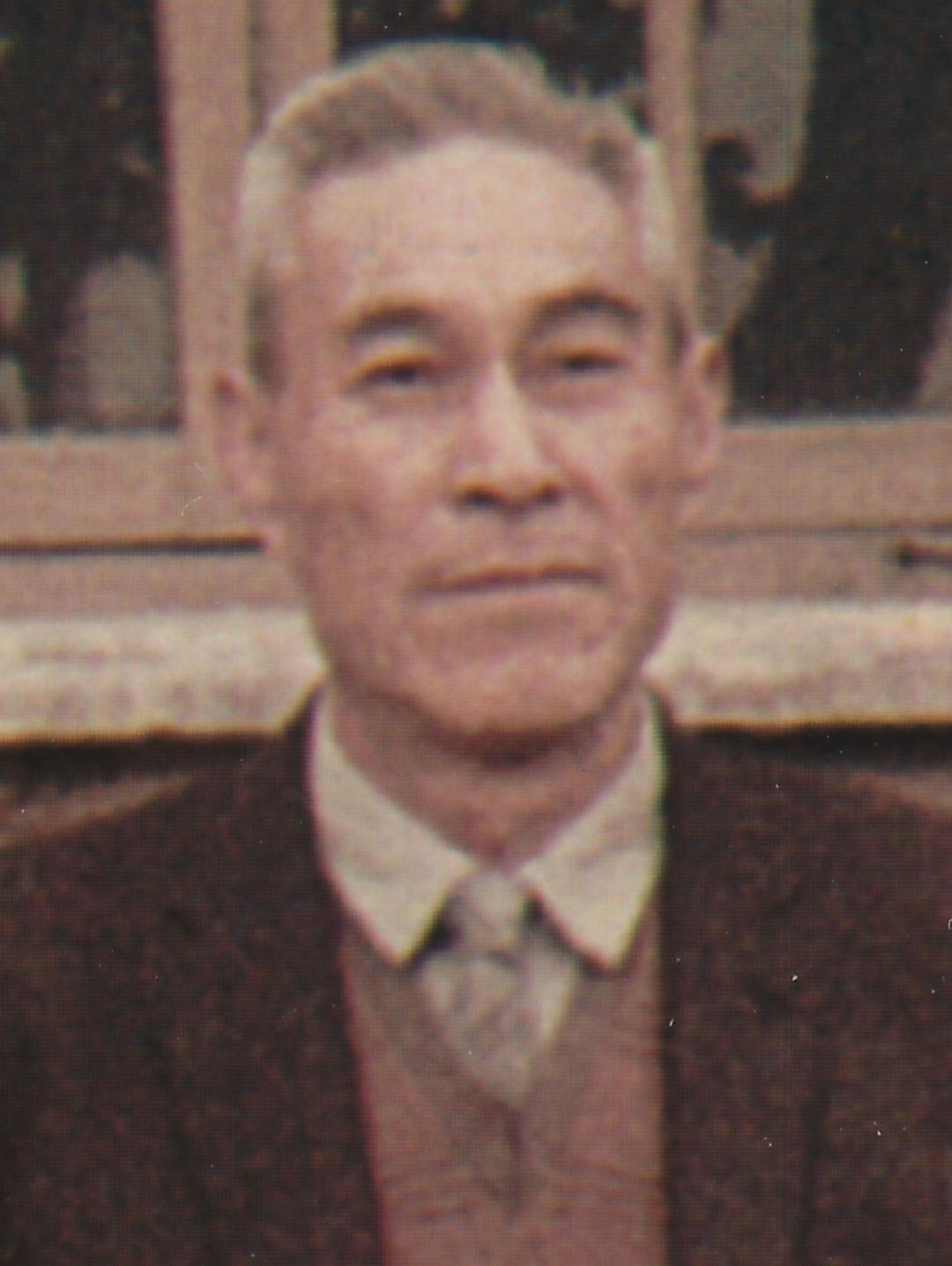The Basement Floor
On August 6, 1945, there were 37 people working inside of this building, known at the time as Fuel Hall. At 8:15 am, an atomic bomb, aimed at the center of the city, detonated in mid-air about 170 meters northeast of this building. The roof was crushed by the ensuing blast winds and concentrated heat rays, the interior badly damaged, and the basement the only floor to escape fire. As there were no doors or windows on the side of the building nearest the hypocenter, and because it was made of reinforced concrete, the original framework and shape remained intact. However, all of the employees in the building, with the exception of Nomura Eizō (47 at the time), would perish in the blast.
According to the blueprint at the time of completion in 1929, the basement was where the cafeteria and other facilities were located. Based on the account by Nomura Eizō, it is thought to have been a place where files were stored at the time of the bombing. Judging from its current state of preservation, the floors, walls, and pillars have been renovated several times, however, no records of these renovations remain.
Nomura Eizō and the Atomic Bomb
The following is an excerpt from an account written by the late Nomura Eizō, who miraculously survived the bombing in this basement.
“…the Fuel Hall, which served as headquarters for the Hiroshima Prefecture Fuel Rationing Union, was just on the south side of the Motoyasu-bashi Bridge in Nakajima Hon-machi, Hiroshima City.”
“…at the time, every morning at 8:00 am, it was standard that the union members gather on the second floor for the patriotic morning assembly. That morning was no different; our manager, Kawai, led us through the ceremony, and then all 37 of us returned to our desks, some of us having a smoke before starting work.”
“…I went to go start my day, but I saw that my usual papers weren’t on my desk. My boss usually brought them up from the basement for me, but he had forgotten that morning. I thought I might ask Hirose, the woman working next to me, to go and get them for me, but she looked pretty busy, so I headed to the basement from the second floor to go and get them myself.”
“…I went to go start my day, but I saw that my usual papers weren’t on my desk. My boss usually brought them up from the basement for me, but he had forgotten that morning. I thought I might ask Hirose, the woman working next to me, to go and get them for me, but she looked pretty busy, so I headed to the basement from the second floor to go and get them myself.”
“That’s when it happened. I heard this massive explosion.”
“There was a sharp pain, and when I went to touch my head, there was something sticky dripping from it. It was blood! I don’t know what, but something big had happened. …the basement is pitch black and I can’t see a thing.”
“…from deep in the darkness, I could hear a man shouting for help. The shouts continued, and then, they turned into sobs: terrible, wailing sobs.”
“…it must have been a bomb! A direct hit to the building! The building above has been destroyed and this basement is all that somehow remained. The thought was heartbreaking.”
“…it’s only a matter of time before I’m dead. Just when I thought I was finished, the faces of my four kids flashed before my eyes. I don’t know what happened after that, and I don’t know how I did it, but when I came to, I was standing on the first floor.”
“…I hurried to the Motoyasu-bashi Bridge. Glancing at the top of the bridge, I could see a naked man lying face-up near the center, his arms and legs raised to the sky and trembling. Something round was burning under his left armpit.”

Drawing of Hiroshima on August 6, 1945 around 8:25 am
Drawn by Nomura Eizō
Courtesy of the Hiroshima Peace Memorial Museum
“…there was a bump in the Motoyasu-gawa River, at least that’s what I thought until it started whirling about, becoming a pillar that rose into the sky. It was a waterspout! Water fell downwind from the center of the waterspout. Fires were blazing out of control. Smoke and sparks from across the river came at me in a barrage. Sputtering, I climbed the stone steps and ran towards the open grounds, only to be hit once more by sparks and ember.”

Drawing of Hiroshima on August 6, 1945 around 10:00 am
Drawn by Nomura Eizō
Courtesy of the Hiroshima Peace Memorial Museum
“…going through the fires without knowing what lay ahead of them meant certain death. Leaving here meant I had to come to terms with the fact that I might never be able to return. I picked up a piece of burnt tinplate and, standing on Aioi-bashi Bridge once again, I looked around to see where I might be able to find help. I know, I’ll try and head towards Koi. There were so many times when I had to take cover by lying flat on the ground or between fallen telephone poles as I made my way past Sakan-cho (current Honkawa-cho), Tokaichi, and Dobashi. The wooden ties of the iron streetcar bridge were burning here and there, but I followed the tracks and finally ended up in Fukushima-cho. Here, there were no smoke, no fires, not yet. The sky was a brilliant blue. When I looked back, all I could see was a fiery, smoky hell. I almost couldn’t believe I made it out.
“…I made it to Koi. Here there were only wounded people with no rescue team in sight. From there, when I made it to Kusatsu, only then did I finally find 5 or 6 soldiers tending to victims. I begged them to save my coworkers, but looking at the thousands of wounded victims, I knew that what I was asking was impossible.”
“…May the souls of 36 of the 37 present at that morning’s assembly rest in peace…”
Written in July 1950

Nomura Eizō
(1898-1982)
orked in the Fuel Hall as a member of the Hiroshima Prefecture Fuel Rationing Union on August 6, 1945. At 8:15 am, he became a victim of the atomic bombing in the basement of the building. Of the 37 staff members present that day, Nomura is the only one to have survived. In 1950, he penned his experience of the atomic bombing. From then on, he gave his testimony of what happened that day until his final years.
This exhibit uses excerpts from Nomura’s testimony with the permission of his family.
